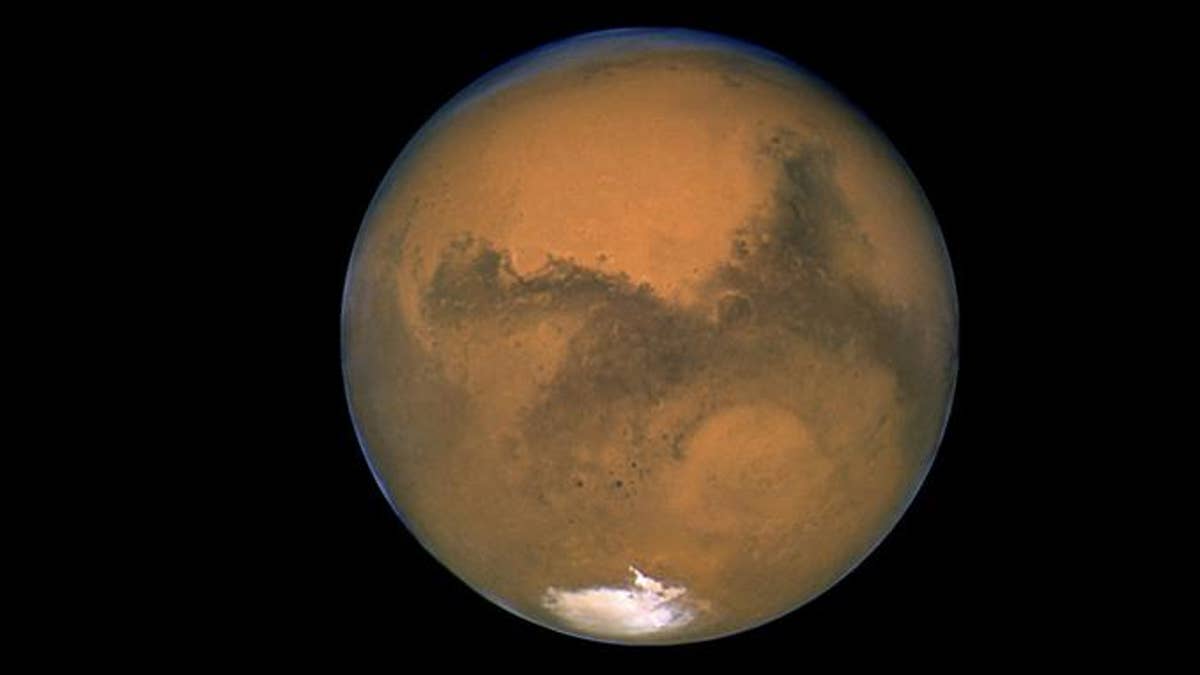
Mars has been enchanting humans for millennia. (NASA/JPL-Caltech)
Who discovered Mars? That's a trick question: Because the planet is visible to the naked eye, humans have been watching our rusty neighbor for thousands of years, and there's no way to track down the name of the long-dead observer who first noticed its reddish glow.
But just because we'll never be able to give that sharp-eyed human a name doesn't mean there's nothing interesting to learn about the history of observing Mars.
Mars, like the other planets visible without a telescope, has caught people's eyes for its unusual movement against the background constellations. Cultures from the Maya to the Chinese, and from the Aboriginal Australians to the Greeks, left observations of its wandering path across the sky. [Mars at Opposition 2018: How to See It and What to Expect]
That said, they didn't know what Mars was — it was just a bright light that didn't behave in quite the same way as the other bright lights did. "These [planets] of course never were regarded, as they are now, as their own separate worlds," Anthony Aveni, who studies ancient astronomy in Central and South America and who retired last year as a professor at Colgate University, told Space.com.
More From Space.com
Early observers of Mars also prioritized different types of observations of the planet than we do today. Modern astronomers focus on the sidereal year, the time it takes Mars to orbit the sun — about 687 days. But for centuries, Aveni said, that wasn't the number sky-minded people associated with Mars. "They recognize periodicities and movements that we don't pay any attention to," he said.
For Mars, that meant people prioritized 780 days, the average length of the cycle that Mars shows in the sky. The planet appears and disappears in the night sky, sometimes slipping into the sunlit sky and becoming invisible. If you watched from appearance to appearance, or from disappearance to disappearance, a cycle would last about 780 days, the synodic period of the planet. "It's about how Mars relates to you personally, how it relates to our culture," Aveni said. "It's not about how long it rotates, whether it has life."
Aveni primarily studies the Maya, and he said that most of what we know about how they watched Mars comes from just one book, called the Dresden Codex. The text includes a table of observations that scholars know must be of Mars because of the 780-day cycle.
The book also includes a drawing of what scholars refer to as the "Mars Beast," which Aveni described as a macaw-like creature with a nose like an elephant's trunk. He added that the planet's orbit, which carries Mars across the whole sky, shaped the traits associated with it. "He's more of a watchdog or a guardian of the entire landscape," Aveni said.
Other cultures looking to the sky, Aveni said, were more interested in how the different planets interacted than in any individual planet's journeys. For example, he points to Chinese astronomers, who were fascinated by planetary conjunctions.
One Aboriginal Australian communitysaw Mars as one of four wives following the moon; another saw Mars and Venus as the two eyes of a celestial being. Although few traditions about Mars survive, astronomers focusing on Australia have evidence that Aboriginal peoples across the region tracked it and the other planets carefully for millennia.
And, of course, the Greeks and Romans traced the movements of Mars and other celestial bodies across the sky. They associated the Red Planet with their god of war (Mars to the Romans; Ares to the Greeks), giving us the Mars we know today.
Email Meghan Bartels at mbartels@space.com or follow her @meghanbartels . Follow us @Spacedotcom , Facebook and Google+ . Original article on Space.com .



















